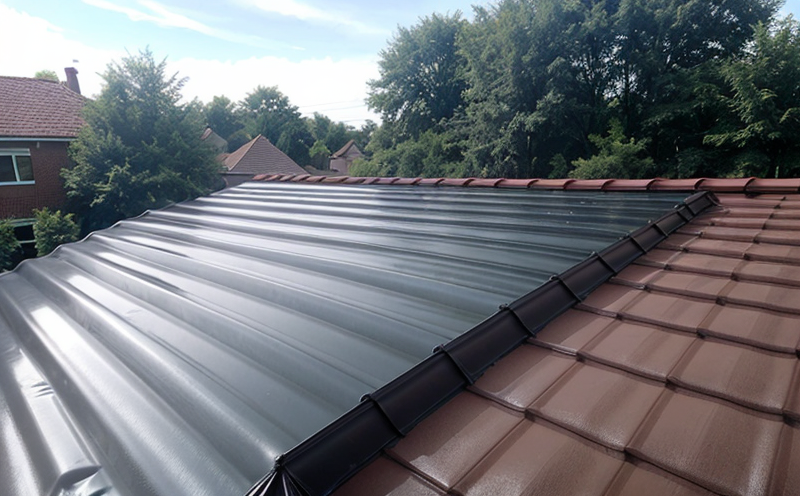ISO 6946 Thermal Resistance Assessment of Roof Assemblies
The ISO 6946 standard provides a method for assessing the thermal resistance (R-value) of roof assemblies. This is crucial in ensuring that buildings are energy-efficient and can withstand varying climatic conditions without compromising on insulation performance.
Thermal resistance testing helps identify any potential issues with the insulating properties of roofing materials, which can lead to significant energy savings for building owners and operators. By adhering to this standard, architects, engineers, and construction professionals ensure that their projects meet regulatory requirements and achieve optimal thermal performance.
The test measures how well a roof assembly resists heat flow from the warm side (inside) to the cold side (outside). This is important because it affects not only the energy efficiency of the building but also its overall durability. Poorly insulated roofs can lead to higher heating and cooling costs, increased wear on HVAC systems, and even structural damage over time.
During the testing process, samples are exposed to controlled environmental conditions that simulate real-world situations. The apparatus used includes a calorimeter chamber where the sample is placed between two plates representing internal and external temperatures. Heat transfer through the roof assembly is measured using sensors at specified intervals throughout the test duration.
The results of this testing provide critical data on the thermal performance of different roofing systems, helping designers select materials that best suit specific climates. It also aids in comparing various products to find those offering superior insulation properties.
Understanding the implications of poor thermal resistance is essential for effective building design and maintenance. For instance, cold bridges—a direct route for heat loss—can form at points where different materials meet within a roof assembly. Identifying these areas early allows corrections before installation, avoiding costly retrofits later on.
The importance of accurate testing cannot be overstated; even small differences in R-values can translate into substantial financial savings over the lifetime of a building. Additionally, complying with standards like ISO 6946 ensures compliance with local regulations and contributes positively to environmental sustainability goals set by governments worldwide.
Given these benefits, many organizations invest heavily in ensuring their roofing systems meet rigorous insulation standards such as those outlined in ISO 6946. By doing so, they not only enhance the comfort levels inside buildings but also contribute towards reducing greenhouse gas emissions associated with energy consumption.
Why It Matters
The thermal resistance of roof assemblies is one of the key factors in determining a building's overall energy efficiency. Poor insulation can lead to increased heating and cooling costs, reduced comfort levels for occupants, and potential structural damage over time due to moisture accumulation.
- Reduces heating and cooling expenses
- Improves occupant comfort
- Avoids mold growth caused by trapped moisture
- Prolongs the lifespan of HVAC systems
- Maintains structural integrity against weathering effects
Scope and Methodology
| Test Parameter | Description |
|---|---|
| Thermal Resistance Measurement | Determining the R-value of a roof assembly under controlled conditions. |
| Samples Preparation | Cutting representative sections from actual roof installations. |
| Calorimeter Chamber Environment | Simulating real-world temperature gradients across the sample. |
| Data Collection | Monitoring heat flow continuously using embedded thermocouples. |
Why Choose This Test
- Ensures compliance with international standards (ISO 6946)
- Provides precise measurements of thermal performance
- Aids in selecting the most effective insulating materials
- Identifies areas prone to cold bridging early on
- Supports sustainable design practices by minimizing energy waste
- Facilitates continuous improvement in construction techniques





